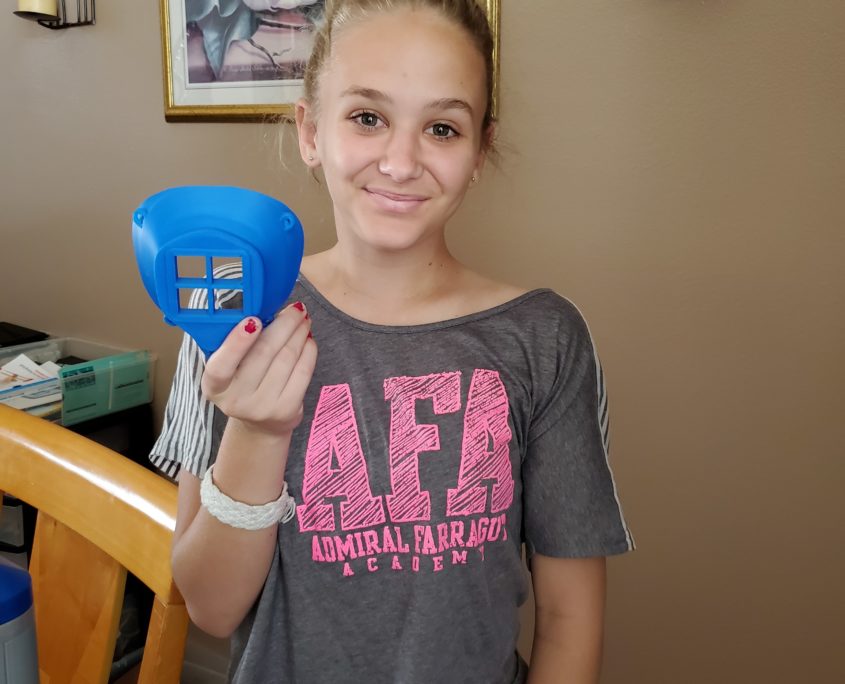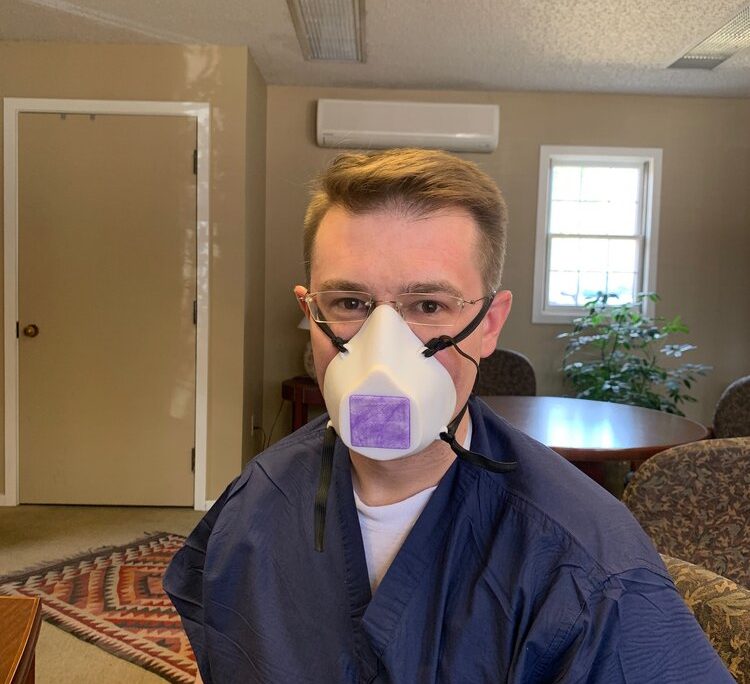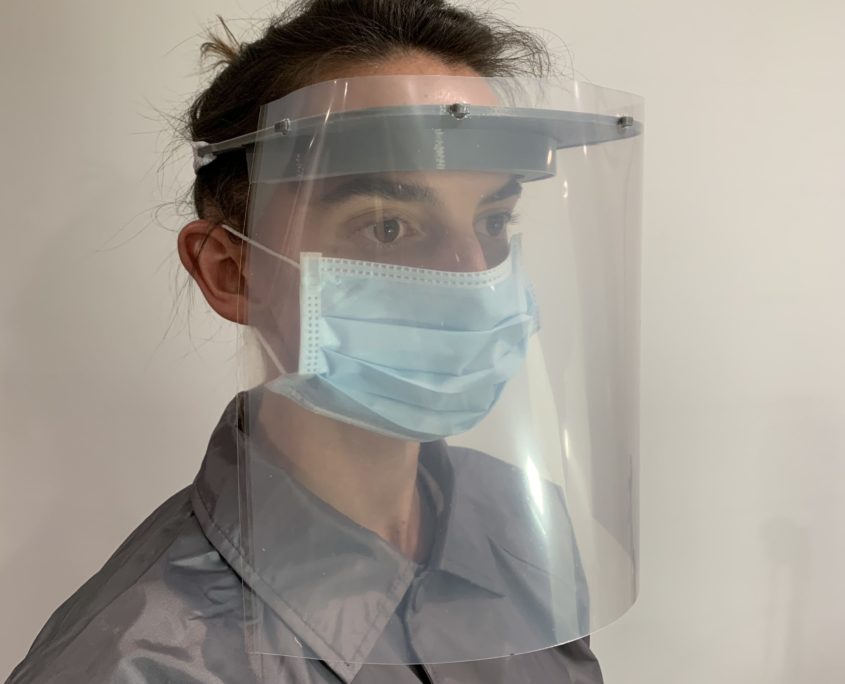

Julia LoRusso ’24 with one of the Montana Masks made by her and her mom Lower School STEM Teacher Shannon LoRusso.
As the COVID-19 outbreak continues to expand globally, the supply chain for masks and face shields continues to be stressed. Lower School STEM Teacher Shannon LoRusso quickly found a way to help by using a 3D printer to print Montana Masks and Face Shields for hospital use. Before Admiral Farragut Academy closed, she took the 3D printer from the Lower School STEM Lab home and the school provided her materials such as the computer and numerous rolls of PLA filament.
“My cousin is a nurse who just moved to Port Charlotte, Florida, and is super excited about receiving these and hopefully she will be allowed to use them,” LoRusso said. “The hospital she works at is low on masks and the hospital in Pennsylvania she worked for before she moved was directing the nurses to use a bandana.”

Making Montana Masks
Through research, LoRusso found a website called www.makethemasks.com that was making 3D printed Montana masks for hospital staff. According to Make The Masks, the Montana Mask is a high-efficiency filtration mask. Available for free public use, the software comes with design files to create a 3D printable mask. LoRusso is making the masks from PLA filament, one of the recommended materials. The key benefit is that the mask itself can be sanitized and reused. Once hospitals receive the 3D printed pieces from LoRusso, they can conserve resources by using 2.5” squares cut from surgical masks; one n95 surgical mask will yield six filters with surgical protection and will yield a greater filtration depending on the fit. Click here to learn more about how the mask is fitted and filtered. Although not approved by the FDA or NIOSH, the mask has been rigorously tested and the level of protection is customizable, depending on which material you use for the filter.

Montana Mask with Filter, www.makethemasks.com
Making Face Shields
LoRusso has also found a way to make face shields through www.budmen.com. The shields consist of a visor made by LoRusso of PLA filament on a 3D printer, and a hand-cut clear polythene shield that the hospital or recipient would then provide. The shield can be easily replaced if hospitals do not want to sterilize the shields daily.

3D printed face shield, budmen.com
She, along with her daughter, Farragut 8th-grader Julia, are able to get about 2-3 masks done a day. It takes over 4 hours just to get one set done. LoRusso has had several people ask her for them so she may just hand them out to hospital staff as they ask for them. “I’d rather get them out there now instead of waiting until I have a specific amount,” LoRusso said.
“When my mom and her cousin started talking about the lack of protective equipment it made me curious about how I can help,” Julia said. “My mom showed me the website about making masks for the hospitals and I thought it was a great idea!”
“This is all very experimental on whether hospitals will allow them to use it,” LoRusso said, “but we wanted to do whatever we could to help and we remain hopeful.”
If you have other positive stories, please email them to communications@farragut.org or tag us on social media.

Learn more about how Farragut is handling COVID-19
Learn more about Farragut’s Lower School engineering program
*We will update this story once we know if the donation was successful or not.*